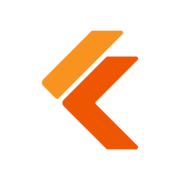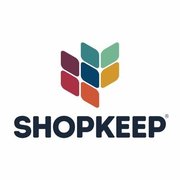
Best Point of Sale Systems 2025
The Point of Sale (POS) is simply the place where a retail transaction takes place--it's the hardware and software used to physically accept payments and record transactions.
We’ve collected videos, features, and capabilities below. Take me there.
All Products
Videos for Point of Sale
Learn More about Point of Sale Software
What are Point of Sale Systems?
The Point of Sale (POS) is the place where a retail transaction takes place: It's the hardware and software used to physically accept payments and record transactions. All POS systems rely on some type of payment gateway or processing software, but not all POS systems require hardware like a credit card reader or register. Physical stores and restaurants often have these hardware components while eCommerce businesses don’t require them.
The main role these systems serve is to process transactions. This includes being able to scan product barcodes or provide a menu of items to choose from, calculating the total item price, and giving the customer an itemized list of products they purchased.
Self-service POS systems automate the transaction entirely, doing away with the need for a human service staff member. Point of sale systems are widely used in the retail, fast food, and restaurant industries. Some POS software is specifically designed for the restaurant industry. Read more about Restaurant POS software here.
Cloud POS Systems
POS systems can either be on-premise or cloud-based. More traditional POS systems are typically on-premise, meaning they are installed on a local computer and all customer and transaction data is saved to a local server. On the other hand, cloud-based POS systems are not tied to a specific computer and can be operated from anywhere with a stable internet connection.
One of the biggest benefits of using cloud-based POS software can be accessed from a tablet or other device by service staff in the field or a retail store. It can also sync with online purchases and accounts for better data collection and retention.
This allows bartenders, servers, and retail associates to be more mobile and accept payments from customers on-the-go.
POS System Comparison
Before investing in a point of sale system, consider the following key factors:
- Ease of use: Is the software easy to set up and start using? How steep is the learning curve of the system? Having a user-friendly point of sale system is critical, especially If multiple people will be using it to process customer transactions.
- Industry-fit: Some POS systems are specifically designed for the retail or restaurant industry. Rather than purchasing a more generic system that will likely need further customization, look for one that is customized to the needs of your industry and business.
- Cloud-based vs. on-premise: Traditional point of sale systems are usually on-premise software. They store transaction records and other data locally, rather than on cloud servers. While they can be more customizable, on-premise POS systems aren’t quite as mobile and remote-user friendly as cloud-based POS systems. Cloud-based systems store data on a public or private cloud server and can be accessed and operated remotely via a strong internet connection.
Other Features
In some cases, POS providers also provide integrated payment gateways for eCommerce features and/or payment processing services.
For small businesses, trends like mobile payments and mobile loyalty programs are especially relevant to product selection. For large businesses, the POS system will often be part of a larger retail management suite.
Sales Reporting and Analytics is a feature beneficial to both small and large businesses. By leveraging Sales Reporting and Analytics, businesses can analyze sales data to identify their best-selling products, top-performing employees, and trends in customer purchasing habits. With this information, businesses can optimize their product offerings, improve employee performance, and tailor marketing strategies to maximize sales. Additionally, Sales Reporting and Analytics allows businesses to monitor inventory and make data-driven purchasing decisions. Through analysis of sales data, businesses can identify slow-moving or excess inventory, helping them adjust their purchasing accordingly. This proactive approach prevents stockouts and overstock situations, leading to improved cash flow and profitability.
Another feature widely available is Inventory Management. Inventory management offers several benefits to businesses. It enables them to maintain accurate inventory counts across all locations, preventing stockouts and overstocking. This ensures that the right products are available to customers when they need them. Additionally, Inventory Management streamlines ordering and restocking by automating stock replenishment based on set minimum inventory levels or reorder points. This reduces manual tasks and ensures optimal inventory levels.
Pricing Information
Pricing covers both hardware and software. Entry-level systems begin at around $500 for the hardware and a monthly subscription price for the software of about $50. However, High-end systems can cost twice that much.
Point of Sale FAQs
What do POS systems do?
What are the best POS systems?
According to end-user feedback on TrustRadius, some of the most popular point of sale systems (by the number of reviews they have) are:
























